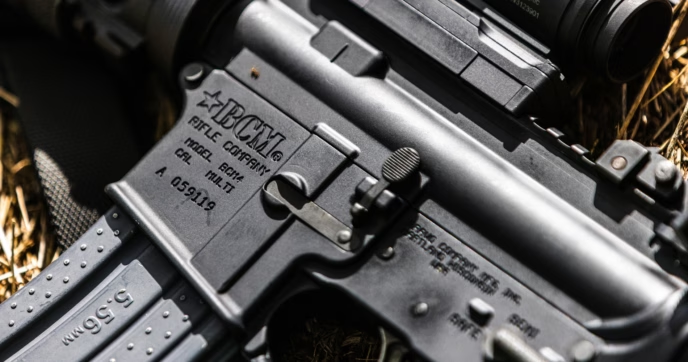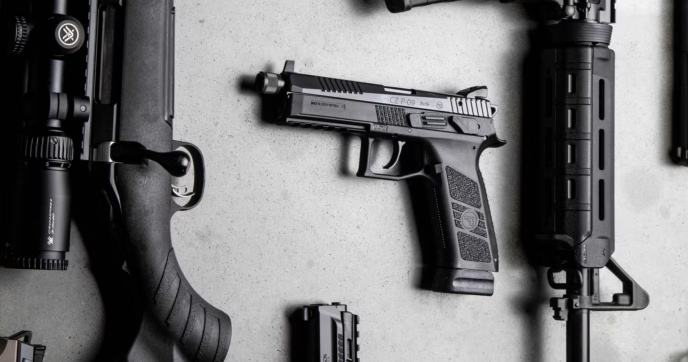Glock pistols are among the defining firearms of the modern era. They’re the gun you think of when someone says the word “Gun”. It is more often than not the silhouette used in signage to represent firearms as a whole. Across the nation, police officers, defensively-minded citizens, and competitive marksmen employ it as their firearm of choice.
Among the wide range of firearms Glock has created over the years, two from their current catalog stand out as some of the most popular: the Glock 45 and 47. The differences between the two are slight but significant, leading many to agonize over which is best for their particular applications.
To help settle the debate, we’re going to break down the differences between them and how they impact their capabilities and best use cases.
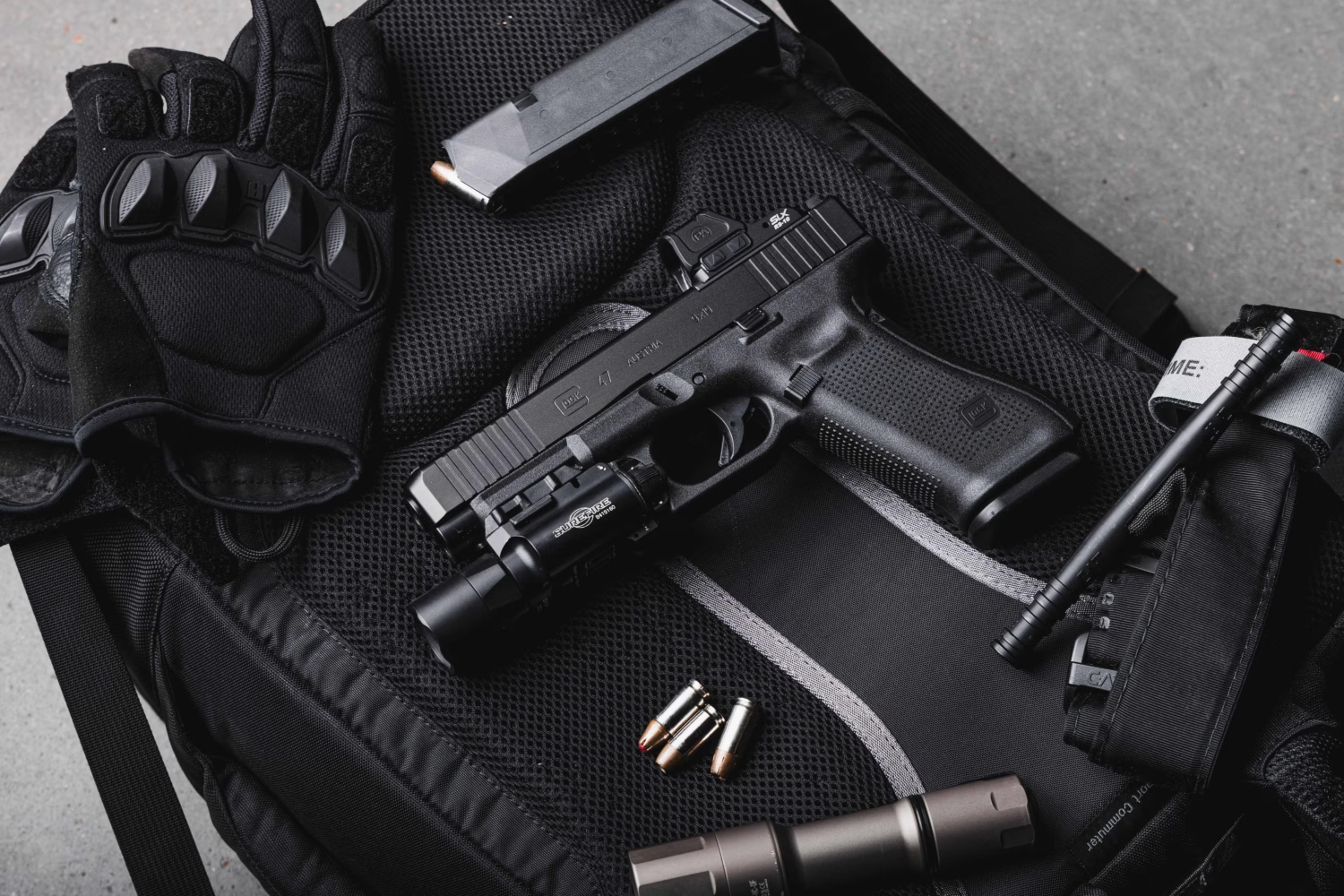
Glock 47
The Glock 47 was first developed at the request of Customs and Border Patrol. It is in most aspects the same as the Glock 17—the first pistol Glock ever made and one of the most popular in its history—but features a shortened dust cover.
With a roughly 4.5″ barrel and full-sized grip, the Glock 47 is by no means a small gun, but neither is it exceptionally long like the Glock 34 or 17L. It’s a full-sized, but balanced, pistol with a 17-round capacity with flush-fitting magazines and the option for extended magazines up to 33 rounds or larger.
At the heart of every Glock is the Safe-Action system, Glock’s signature blend of safeties that make it nearly impossible for a Glock to fire without the trigger being pulled. This system gives millions of users the confidence to carry Glock pistols without fear of an accidental discharge, although proper gun safety is of course required to prevent a negligent one.
This assumes, of course, that the trigger remains in its OEM configuration. If you plan on modifying or replacing your original Glock trigger, we highly recommend perusing our Glock trigger guide first.
The Glock 47 is a part of the current generation, Gen 5. The Glock 47 Gen 5 9mm pistol sports all of the improvements intrinsic in the Gen 5 lineup, including a reimagined grip with a new texture and notable absence of finger grooves, as well as a slightly flared magwell. Gen 5 also brought with it an ambidextrous slide release, which, in combination with the reversible magazine catch, makes the 5th generation of Glock pistols truly ambidextrous.

Glock 45
The Glock 45 handgun is, in most respects, very similar to the Glock 47. It sports the same full-sized grip and accepts all Glock 17 magazines. Both are chambered in 9mm. While the Glock 45 is not technically a fifth-generation pistol, being instead a part of the Crossover series, it sports all the same features and upgrades that have made the 5th Generation so very popular.
The primary place in which the pistols diverge is in slide and barrel length. While the G47 has a 4.49″ barrel, the G45 barrel measures nearly a half inch shorter at 4.02″—a length identical to that of the ever-popular Glock 19. This makes the Glock 45 a sort of hybrid, featuring the grip and capacity of a G17 but the overall length of a G19.
The reasons for this are many. The shorter barrel allows for a faster draw time, and many users find that having less of the firearm protruding below their belt line makes for a more comfortable carrying experience. This is particularly true for those who carry their firearm in an appendix position.
The shorter slide and barrel length of the Glock 45 also help to compensate for any muzzle devices users may wish to add to it. A Glock 45 with a compensator, for instance, is typically as short or shorter than a Glock 47 bare. This allows users significant felt-recoil reduction over a Glock 47 while maintaining the same overall size of the package.
Since muzzle devices tend to be one of the top Glock upgrades, the benefit of the shorter overall length is one that many owners are able to take advantage of.
A similar benefit is afforded to those who wish to run their firearm suppressed, as the shorter overall length helps to balance out the added bulk of the suppressor. Unfortunately, as with most things, these benefits come with trade-offs.
A shorter barrel and slide necessarily mean a shorter sight radius, which can make accuracy more challenging. Notably, a shorter sight radius does not make the firearm inherently less accurate, but rather makes it more challenging for the user to be accurate with the firearm, so highly skilled users may see no difference in accuracy between the two pistols.
Additionally, a shorter barrel will technically result in slightly lower muzzle velocities, although the difference in this case is so slight as to be negligible for nearly all practical applications.
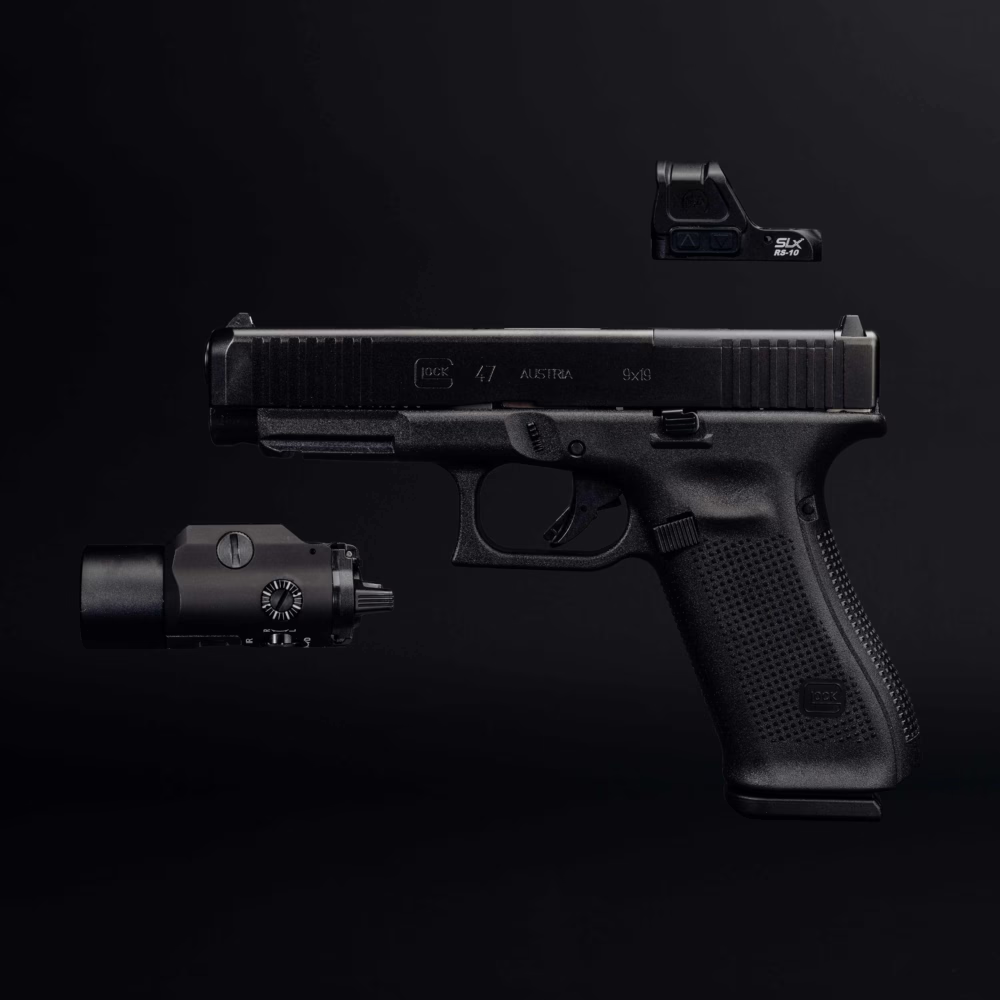
The Glock MOS System
Both the Glock 47 and Glock 45 are available with Glock’s Modular Optic System, a versatile method of machining the slide to accept a variety of adapter plates, which then interface with most common red dot mounting systems on the market. Unlike most aftermarket optic cuts, this system allows nearly any pistol-oriented red dot to be mounted to a Glock, and because it is a factory option, does not void the warranty. We offer a full breakdown of the pros and cons of different mounting options in our article on aftermarket, custom, and OEM Glock slides.
Glock’s optic-ready options are particularly notable in this case because they functionally negate one of the primary drawbacks of the Glock 45: the short sight radius. Red dots are not subject to sight radius. They have no front and rear sight to align—users simply put the dot on the target and pull the trigger. This means that a Glock 45 MOS pistol would, on average, have the same accuracy as a Glock 47 MOS pistol, all else being equal.
Glock 47 vs Glock 45: Concealed Carry
Concealed carry is one of the applications in which the Glock 45 really shines over the Glock 47. It offers the same capacity, the same grip ergonomics, and if one is inclined to mount a red dot, nearly an identical firing experience. However, the extra half-inch of barrel of the Glock 47 can be a significant detriment to comfort when carried for an extended period of time, particularly in an appendix position.
For this reason, we would be inclined to give a slight edge to the Glock 45 in this category.
Glock 47 vs Glock 45: Competition
While neither is a truly ideal pistol for competition—the Glock 34 and Glock 17L exist for much that very reason—both options are perfectly serviceable for competition. However, many divisions of common leagues such as USPSA and IDPA prohibit red dots, meaning that sight radius would become a more important factor in this application unless the user plans to compete exclusively in divisions that allow red dots. For this reason, the Glock 47 may have a slight edge for some users.
Additionally, the slight velocity increase offered by the G47’s longer barrel may have some benefit when engaging steel targets. While the chances of hitting a target precisely in a location where a Glock 47 would have enough energy to topple it and a Glock 45 would not are slim, they are not zero.
There are functionally no drawbacks to choosing a Glock 47 over a Glock 45 for competition. Concealment is a non-issue here, and comfort is not likely to be significantly different between the two firearms with common competition holsters.
Glock 47 vs Glock 45: Home Defense
Here, the decision largely comes down to personal preference. Home defense firearms are generally not carried in holsters, certainly not for long periods of time, so any difference in comfort between the two firearms would be a minor distinction at most. The velocity differential between the two is unlikely to have any impact on the outcome of a defensive use with appropriate self-defense ammunition.
The difference in overall length, though, may come into play, particularly for users who plan to run suppressors for this application. Suppressors are becoming increasingly common on home defense pistols, as they can be kept on the firearm at all times and employed even when circumstances do not allow for hearing protection to be donned before use.
In this instance, the shorter overall length of the G45 may be an ergonomic benefit when maneuvering through tight indoor spaces such as doorways and hallways. While a half-inch of barrel makes little difference between the two guns when bare-muzzled, with six inches of suppressor hanging off of them, every half-inch counts.
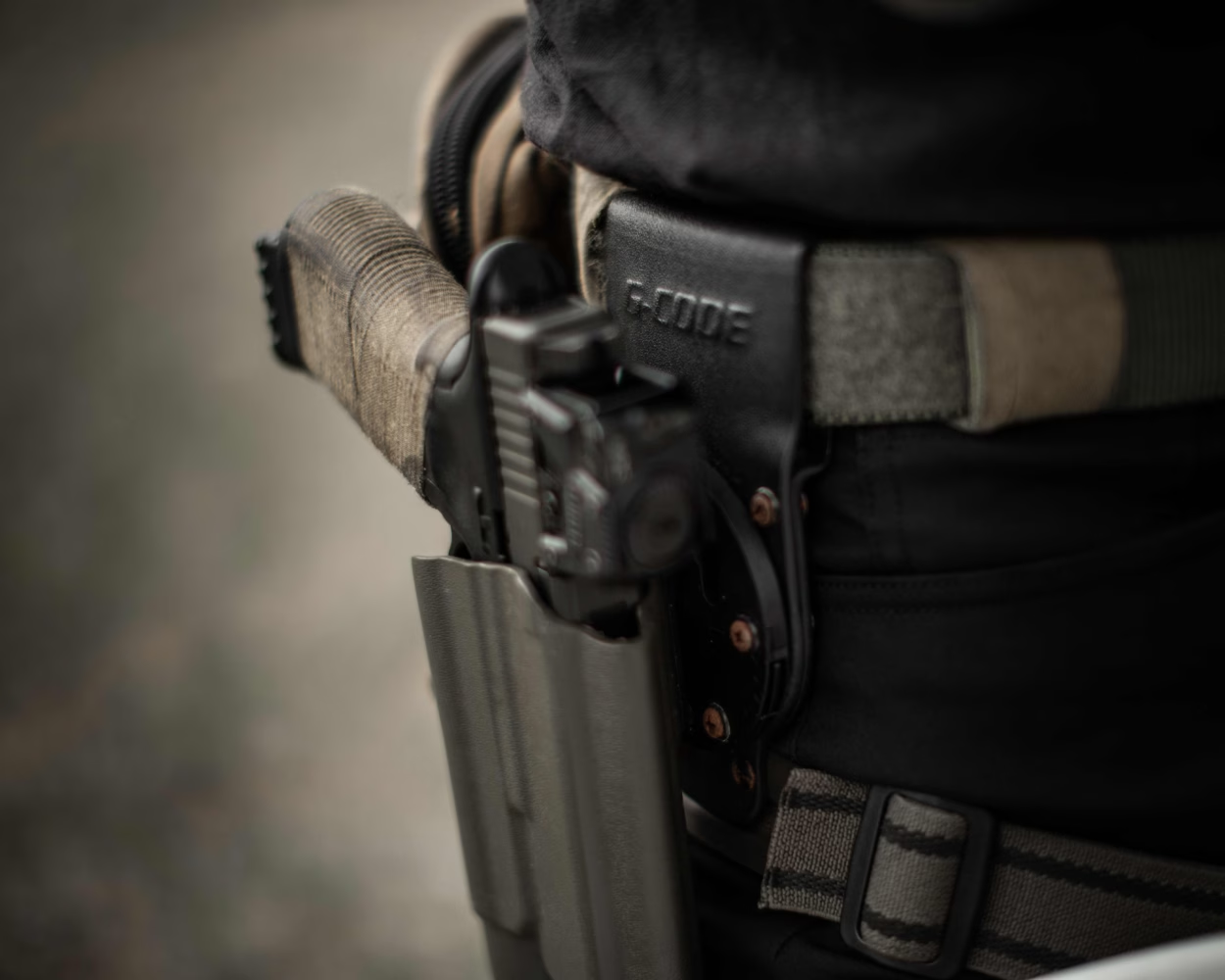
Conclusion
Both the Glock 47 and Glock 45 are exceptional pistols. They’re more alike than they are different, and for most applications, neither could truly be considered to be a wrong choice.
Each does offer it’s slight benefits and drawbacks, though. The Glock 47 offers a slight edge for those who prefer iron sights to red dots, while the Glock 45 is often preferable for users who wish to deck their firearm out with a reflex sight and muzzle device.
In the end, though, the best Glock is always going to be whatever one is on your hip.
